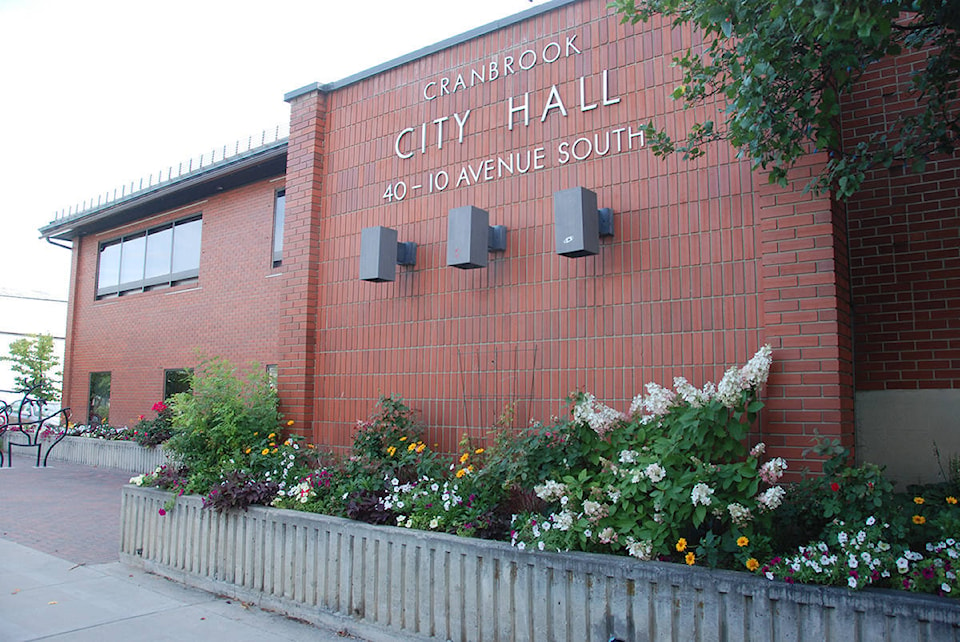Gaps in Cranbrook’s housing stock include shifting demographics and a mismatch of the types of housing available compared to the housing needs of the community, according to a consultant report presented to city council on Monday night.
Jada Basi, who presented the report on behalf of City Spaces Consulting, told council that seniors have limited options for downsizing, low-income households are challenged to afford average rents, many apartment buildings in the city are reaching end of life, and the city’s rental stock has a disproportionate number of 3/4-bedroom units, while lacking 1/2-bedroom units.
“The COVID-19 public health emergency, from my mind, has magnified the housing issues, so vulnerable populations are even more vulnerable than they were and persons who might have been living paycheque to paycheque might have lost some of their wages, and as a result, are experiencing housing issues as well,” Basi said.
“…It’s really magnified issues that were already there that sometimes would have otherwise been hidden.”
Basi’s report projects a population growth of approximately 29,000 in the Cranbrook area by 2030, as seniors and ‘empty-nesters’ take on a larger proportion of the city’s demographics, indicating a need for increased housing options for seniors.
In terms of the city’s housing stock, single-detached homes make up 63 per cent, apartments fewer than five-storeys make up 15 per cent, townhouses make up six per cent, duplexes make up five per cent, and secondary suites make up three per cent. An additional seven per cent of homes are classified as mobile homes, according to the report.
Breaking down some 2016 Statistics Canada and census figures pertaining to Cranbrook, the study identified 40 per cent of renters spend more than 30 per cent of their income on housing costs, as compared to 11 per cent of homeowners who meet the same threshold.
The report also identified core housing need — households spending more than 30 per cent pre-tax income for shelter, live-in crowded conditions or live in a home that requires major repairs. Based on 2016 data, 29 per cent of renters in Cranbrook are in core housing need, while a further 11 per cent were identified as in extreme housing need, due to spending 50 per cent of income on housing costs.
In comparison, only four per cent of homeowners were considered in core housing need, spending more than 30 per cent on housing costs while two per cent of homeowners were considered in extreme core housing need, spending nearly half of their income on housing costs.
Data from a point-in-time homeless count was also considered which was conducted by the province this year in Cranbrook. The count identified 63 people experiencing homelessness, an increase of 117 per cent from two years ago.
Of those counted, barriers to housing included high rent costs, low income and poor housing conditions.
Projecting population growth and demographic shifts, the report estimates that 430 housing units are going to be needed over the next decade, consisting of one, two, three, four-bedroom units.
Particular housing gaps include a permanent year-round emergency shelter, transitional housing, supportive housing, social housing and low-end market rental housing. Additional gaps include market rental housing and affordable home ownership, particularly for those who are struggling to save for a down payment.
“To address housing needs and gaps, it really does take a multi-sector approach and not one organization or entity can do it alone,” Basi said, listing off engagement opportunities between local, provincial and federal levels of government, along with non-profit organizations and developers.
However, she added that some housing related initiatives are already underway in Cranbrook, such as the development of a secondary suite policy, the Broadstreet apartment and townhouse development on Innes Ave and the new student housing buddings on the College of the Rockies campus.
“I was really pleased to see the recent housing projects and proposals in the city that I think are quite positive steps,” Basi said. “…all together they help address different parts of the housing continuum.”
Moving forward, Basi will conduct a capacity-building workshop with city staff, as the city has opportunities to support, encourage or facilitate the development of housing within the community.
Considerations include policy measures such as building partnerships with non-profits, private developers, and the Columbia Basin Trust, housing agreements between property owners and governments, downtown revitalization that includes a residential component and upgrading aging infrastructure.
Additional regulatory measures centred on updating zoning bylaws, adding secondary suites (something already underway), allowing detached accessory dwelling units, expediting affordable housing applications, and reviewing administration’s development procedures.
The report was funded in part by the Union of British Columbia Municipalities (UBCM), which contributed a $30,000 grant towards the study, as part of a new provincial requirement mandating municipalities across the province produce a detailed housing report.
Councillor Wayne Price said city council was told Cranbrook was experiencing a housing ‘crisis’ in 2018, as elected officials have grappled with a number of zoning amendments and project approvals.
“At that time, I think council has taken action to support all levels of housing development within the city since then, so this report is very timely; it’s come along right after that [crisis] was identified,” Price said. “I think council will start addressing it immediately and I think you’ll find, in very short order, the majority of these issues will be taken care of within a year and a half, I would bet.
“I think the only shortcoming we may have is the seniors downsizing. All the other levels you’ve mentioned here, we’re well on our way of addressing these.”
